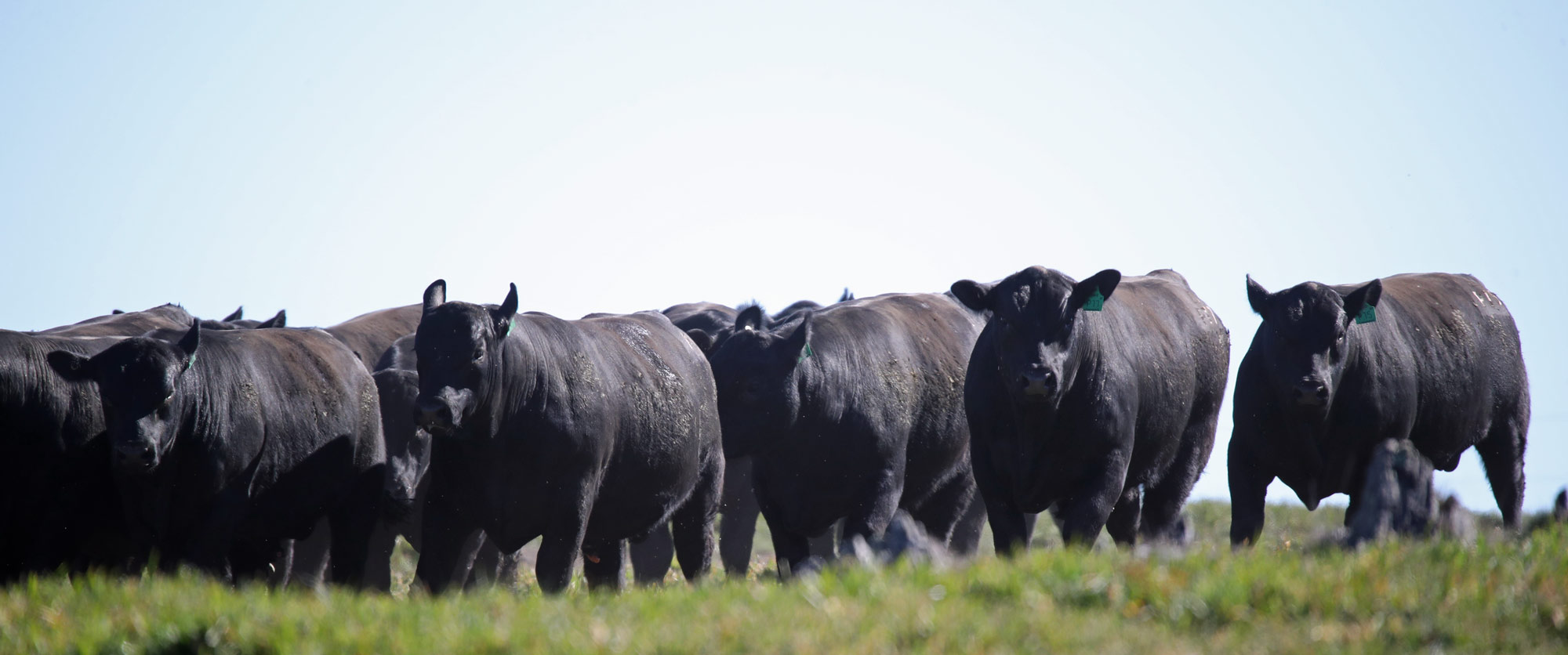 If you have problems at calving you risk losing the calf and the heifer, but the hidden costs are sometimes even greater. These include the sub-clinical effects of poor colostrum transfer and milk production plus more difficulty getting the female back in calf due to infections, prolapses and stress.
If you have problems at calving you risk losing the calf and the heifer, but the hidden costs are sometimes even greater. These include the sub-clinical effects of poor colostrum transfer and milk production plus more difficulty getting the female back in calf due to infections, prolapses and stress.
It’s easy to entirely blame the bull if you have a poor calving in your first calf heifers. However, in reality genetics accounts for only forty percent of what you see in a calf, and half of that comes from the female. A massive sixty percent of what you see in a calf is environmental. The good news is that we can control many of the environmental effects and we can also steer genetics in the right path to give the heifer the best chance of calving easily, producing a thriving calf and quickly re-breeding.
Controlling the Environment
We break the environmental effect into two components. The first being the environment around the calf in utero including how well grown, strong and healthy their mother is, as well as how nutrition has impacted on the calf for the three trimesters of pregnancy. The second component is the external environment ie the nutrition/pastures and conditions in the fortnight leading up to calving and their effect on the metabolics of the cow and her subsequent ability to push the calf out.
In short, a two year old heifer will have the best chance of calving if she has reached at least 75% of her mature weight (85% is better), by the time she calves. Given that nutrition diverts strongly in the last trimester of pregnancy to the unborn calf, it is critical that the heifer does most of her growing in the first trimester. This fits logically if calving patterns are matched to seasonal conditions ie for us Spring/Summer is the first trimester, and winter is 3rd trimester. What it doesn’t mean is to starve a heifer in the last trimester as this will only serve in making the heifer weaker.
In the period leading up to calving the key message is that lush, heavily fertilised, green grass (or crop) is the enemy, particularly short grass. The reason for this is that is it rich in nitrates and high in potassium and these affect the ability of muscles to function. Of course two of the biggest muscles in the body at calving are the uterus (needed for strong contractions to push the calf out) and the rumen (needed to give the heifer the energy to get through the process). So excess nitrates and potassium lead to poor muscle function leading to what we call ‘lazy heifer calvers”, or technically speaking, hypocalcaemia.
What you will see clinically is dead calves or paralysed heifers because the calf has been in the birth canal too long, or calves that you pull easily and the heifer has just run out of puff. Then you get subclinical effects including prolapses, poor presentations, infections and poor colostrum transfer.
How to Fix Lazy Heifer Calvers
Ideally heifers should calve in dry natural pastures that have plenty of bulk and energy. When we can, we leave a paddock in Autumn/Winter to bulk up and frost. Sometimes this is difficult but you can work with what is there. If you have no choice but to put them on green, short or highly fertilised pastures then you need to try and balance the nitrate/potassium (N/K) challenge in the fortnight leading up to the point of calving. At the very least this may mean supplementing the heifers with rough hay (straw, wheaten, oaten, sorghum)- not lucerne or silage as these too are rich in N and K.
At best you should supplement the heifers with the rough hay as well as a Magnesium based lick, pellet or block. This will negate the N/K effect on muscle function and allow her to mobilise the calcium from her bones for strong contractions, extra energy and good colostrum transfer giving the heifer her best chance to get the calf out, whatever the size.
Magnesium based licks are commercially available in a pre-calve lick or pellet and most cost effective if you have the ability to early preg-test your heifer mobs and split them into calving groups 3 weeks out. It’s an easy positive cost benefit if you can deliver more live calves and have more live heifers (it doesn’t take many extra of those to make a big difference). The extra bonus is healthier and bigger weaners and increased first calf heifer re-conception rates.
For more information on calving ease, please call Stuart Halliday on 0417 674 412.




